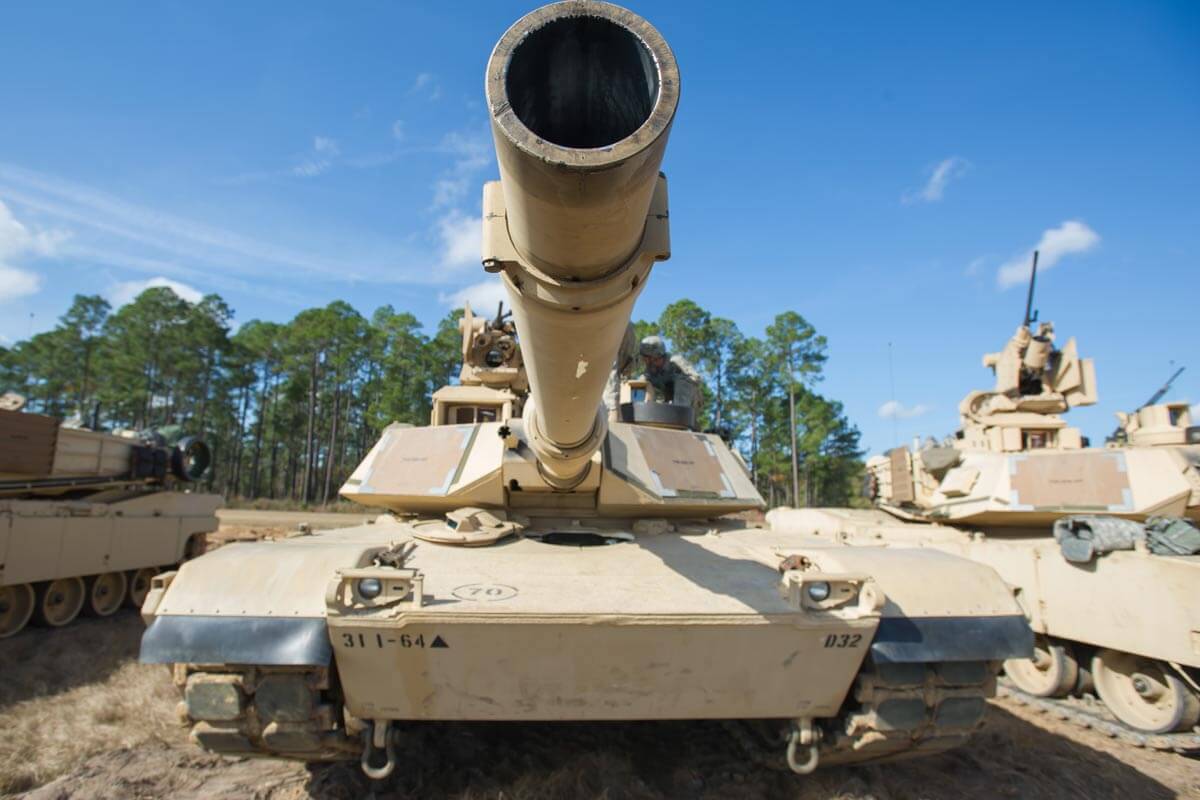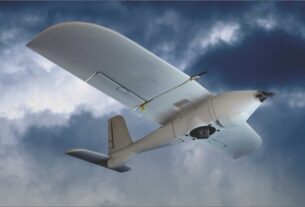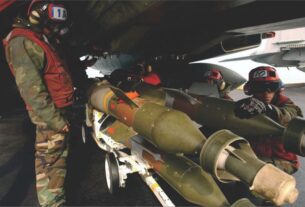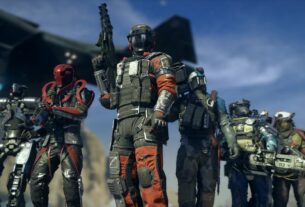Leading militaries have invested into mechanization of transport, and warfare was the cradle and the laboratory for many vehicles. None of them, however, has become as potent a symbol as the tank.
From its first appearance in the First World War, to the images of massed tank battles in the Second World War and beyond, the tank has become as much a metaphor for implacable military superiority as a force in itself.
When prime minister Harold Wilson told a union chief in the 1970s to ’get your tanks off my lawn’, nobody doubted what he meant.
Conceived in the mid-19th century as a way of combining the functions of horse cavalry and mobile artillery pieces, the tank has had a familiar form and role since the 1940s-a lozenge-shaped body, protected by thick armour plate, running on tracked wheels and with a large gun on a rotating turret.
They generally use large diesel engines, and the crew inside, although protected, have limited visibility, using periscopes or camera systems to see outside.
But the tank is changing. ‘Tank design is about getting the right combination of protection, manoeuvrability and firepower; the Americans call it the ‘Iron Triangle’.
Most of the arms companies are using traditional methods in tank manufacturing. BAE’s FPV project is, in part, a reaction to the Ministry of Defence’s (MoD) ‘Capability Vision’ for armored vehicles, designed to spur development along different paths from the UK MoD’s previous research.
The UK’s current MBT, the Challenger 2, weighs 62.5 tonnes, and runs a 1,200hp V12 diesel engine. But for tank makers, the view goes even further. ‘We look at three different timescales,’ said an engineer.
It is a given that the raison d’etre for a tank will always be to carry a large gun (or other suitable-sized equipment), but its other main task-to protect the troops inside-could change dramatically, with implications for the kind of protection it needs and for the way that it moves.
‘Protecting humans has always been a big design driver, and we accept that you’ll always need soldiers inside tanks,’ a BAE engineer said. ‘But you won’t need as many soldiers in there’.
‘That means that you can change the philosophy from protecting people to protecting technology that can be repaired or interchanged. You would no longer need to think about 10-15 people in the back of the tank. You could have one or two; you could even have none. That dramatically reduces the size of the vehicle.’
One contributing factor here is the development of new materials that can be used to armor the tank, particularly ceramics and composites. ’There have been big developments with ceramics, and they are no longer kept out of our industry by their cost,’ he said.
‘These are materials that exist; we’ve done the physics work on them and we know their limits, but now we need to do work to show how they’ll behave in an example environment.’
Transparent armor has particularly exciting possibilities, and transparent ceramics are already showing great promise in this area.
Transparent alumina-made by subjecting sub-micron-sized grains of aluminium oxide (Al2O3), the same compound that comprises sapphire and ruby, to high temperature and pressure-was developed at the Fraunhofer Institute for Ceramic Technologies and Sintered Materials in 2003, and is lighter and stronger than steel.
Other transparent ceramic armour candidates include aluminium oxynitride spinel, which is being developed by Raytheon; the company has succeeded in making a window from the material measuring 11in2.
For a tank designer, transparent ceramics would represent a major change. Previous types of armored glass have not been strong enough to use as windows in a fully-armored vehicle.
Crews can use remote cameras to provide a view of the outside world, which keeps them safe, but at a penalty: it reduces spatial awareness, dislocating the crew from their natural feel of their position within the environment.
Future technologies
‘Having armoured materials that you can see through gives you a big advantage here,’ the engineer said.
Another advantage of ceramic armour is its weight; using this material rather than steel would make a tank a far lighter and nimbler vehicle than the lumbering behemoths we are used to seeing.
The sheer mass of a conventional tank has its advantages, especially when it comes to protection against mines.
The sort of explosion that generates the equivalent force of 200g in a fraction of a second is very hard to protect against, current strategies include seats that are designed to absorb heavy impacts, which work in a similar way to aircraft ejector seats.
But the benefits to manoeuvrability of lighter, stronger materials far outweigh the benefits of mass, he said. ’We would like to make them as light as possible.’
Nimbler vehicles will likely mean a different system for moving the tank around. Could it be goodbye to tracks? Many in the industry believe that electric drive could spell the end for the most recognisable feature of tanks, with hub-mounted motors equipped with anti-slip devices providing more traction than tracks.
It is an often-heard observation that military engineers design for the last war, and it is true that tracked vehicles have been very well suited for massed battles in muddy fields.
But they are less suited to other terrains and designers are keen to avoid limiting the types of environment that their vehicles can operate in.
Some of the possibilities have the distinct taste of science fiction around them. He said: ’There is always been an argument between wheels and tracks, but it is not all about that now; there are hybrid systems, hovercraft, even walker systems. When we’re looking at future technologies, up to 50 years ahead, we’re opening the door to new ideas.’
The future, however, is likely to be modular. With the FRES vehicles leading the way, armies are likely to have the choice of fitting an armored body with whichever weaponry and mobility system suits the particular mission best. Half-tracks, full-wheel and walking hybrid systems could all be available.
With electric drive and other software-based electronic systems onboard, future tanks will have a far greater demand for electricity than current vehicles.
This is likely to mean a further shift in the role of tanks. As well as being a method of moving weaponry and troops around, they could become a way of moving electricity, as the power system inside the tank shifts from providing torque to drive it, to generating power for its systems.
One example of a possible future system is under test by BAE Systems Land Systems Hagglunds in Sweden, with a modular armoured system known as SEP.
This has an electric transmission system, six wheels driven by electric motors, and two engines providing the power. It can be run silently off batteries, which are charged by the engines.
The SEP is designed on a modular basis, which allows it to be reconfigured for 24 different roles, including anti-tank missile system, mine clearer and NBC decontamination centre.
SEP is not currently deployed by any armed forces: Sweden cancelled its SEP programme in 2008 because it could not find international collaborative partners.
The next generation of tanks to enter service in the British Army are in the FRES (Future Rapid Effect System) group, and after a contentious and acrimonious bidding process, they will be built by General Dynamics.
Classified as a light tank rather than the heavier MBT class, the FRES vehicles are designed to fill scouting and specialist roles.
General Dynamics’ ASCOD SV (specialist vehicle) is rated at up to 42 tonnes, which, according to chief engineer John Abunassar, means it can carry a 120mm gun without compromising its armor or performance.
The turret ring on the vehicle is 1.7m wide, with the main ammunition feed under armor but outside the turret crew compartment.
This allows space for display screens inside the turret while still allowing some freedom of movement for the crew, even if they are wearing body armor. ’Our design for a large turret ring is an advantage for the soldiers inside,’ Abunassar said.
The ASCOD family was developed by the Austrian and Spanish subsidiaries of General Dynamics in the late 1990s; the first version entered service in 2002.
To meet the MoD’s brief, the UK subsidiary refined the design and came up with four variants: the scout, the command post and forward reconnaissance armoured vehicles, and an armoured recovery vehicle.
The turret was designed by Lockheed Martin UK, which will also produce the component.
The US and NATO are now investing into new generation tank technologies. As a result, achieving even incremental improvements in crew survivability has required significant increases in vehicle mass and cost.
‘The trend of increasingly heavy, less mobile and more expensive combat platforms has limited Soldiers’ and Marines’ ability to rapidly deploy and maneuver in theater and accomplish their missions in varied and evolving threat environments.’
The Ground X-Vehicle Technology (GXV-T) program, dubbed ‘X-planes for tanks’, is designed to develop a range of new vehicles.
‘GXV-T’s goal is not just to improve or replace one particular vehicle – it’s about breaking the ‘more armor’ paradigm and revolutionizing protection for all armored fighting vehicles,’ said Kevin Massey, DARPA program manager.
‘Inspired by how X-plane programs have improved aircraft capabilities over the past 60 years, we plan to pursue groundbreaking fundamental research and development to help make future armored fighting vehicles significantly more mobile, effective, safe and affordable.’
Moreover, larger vehicles are limited to roads, require more logistical support and are more expensive to design, develop, field and replace, the agency says.
‘The U.S. military is now at a point where-considering tactical mobility, strategic mobility, survivability and cost-innovative and disruptive solutions are necessary to ensure the operational viability of the next generation of armored fighting vehicles.
The Ground X-Vehicle Technology (GXV-T) program to help overcome these challenges and disrupt the current trends in mechanized warfare is going on.
But Russia has come out a new technology challenge for NATO as it is creating a brand new machine. The Armata Universal Combat Platform is Russia’s attempt to make a interconnected family of tanks, infantry fighting vehicles, armored personnel carriers, self-propelled guns, and other vehicles.
The centerpiece is the T-14 Armata main battle tank, a radical design that highlights a troubling lack of fighting vehicle development in the West.
The T-14’s biggest departure from traditional tank design and the turret is completely unmanned; instead, the three crew members operate the tank in a compartment at the front of the hull.
This provides several advantages. There is more room in the turret for armament; currently, the T-14 is equipped with the latest upgrade of Russia’s standard 125mm tank gun, the 2A82A; in addition to the wide variety of Russian armor-piercing and high-explosive shells available, the gun is also capable of firing anti-tank guided missiles.
Armament could be provided in the form of a co-axial 30mm auto cannon and PKT machine gun, giving the T-14 the ability to engage a wide variety of targets.
The remote turret could also theoretically allow a single crew member to maneuver and fire the T-14’s weapons, albeit much less effectively.
The turret is notably taller than previous Russian designs and contemporary Western tanks; a tall profile hinders the ability of the tank to go “hull down” behind cover, a quintessential tactic of armor warfare.
But the larger turret could possibly accommodate a larger 152mm main gun, increasing the T-14’s firepower even more.
Another possible tradeoff involves the crew compartment; while the front armor of most tanks is often the toughest, the T-14 crew will certainly be the first to know if any rounds do get through.
Some designs, like the Israeli Merkava, have moved the engine to the front in order to provide more protection for the crew for exactly this reason.
The T-14 crew may not have to worry, however. In an unprecedented shift to prioritize protection over mobility, which shaped the design of many Soviet tanks, the T-14 will incorporate several active protection systems designed to kill incoming missiles before they even strike the tank.
The tank also features explosive reactive armor as an inherent part of the design, providing an increased defense against projectiles.
Completing the defense are slat armor panels at the rear, which provide some protection against shoulder-launched anti-tank weapons.
The overall armor composition is new, but its makeup is unknown. It is likely similar to the “Cobham” and “Dorchester” composite armor developed by the British Ministry of Defense, putting it on par with tanks used by NATO nations.
The T-14 features a new target and sensor package, including an active electronically scanned array radar suite derived from a fighter jet, enabling the T-14 to track multiple targets simultaneously and provide automatic ballistic solutions to the gunner.
The commander has day, night, and thermal optics in a remote system that also features a machine gun similar to the American Common Remotely Operated Weapon Station.
The T-14’s massive improvements may seem shocking, but the truth is the Russians have pioneered new tank designs for decades.
Significance in war
The Russians always considered tanks an important part of ground warfare, whereas the West questioned the future of the tank several times during the Cold War.
This was notably seen in the aftermath of the 1973 Yom Kippur War, where Israeli tanks counter-attacking against Egypt and Syria took heavy losses from AT-3 “Sagger” anti-tank guided missiles.
On the Sinai front, the successful assault crossing of the Suez Canal by the Egyptian forces was followed immediately by counter-attacks by the Israeli 252nd Division, which ran into Egyptian infantry equipped with an exceptionally large number of Soviet-made Sagger anti-tank guided missiles and failed, losing 165 of its 268 tanks.
This immediately led to worldwide rumors that tanks were no longer effective and it took some time for these to be disproved by the evidence provided by the rest of the Yom Kippur War, in which many more tanks were destroyed by the guns of the opposing tanks than by guided missiles.
Western tank development has ebbed and flowed, whereas Russian armored vehicle research remained almost a constant. Several NATO allies have dominated their armored forces in comparison with the Russian Federation.
That trend seems to have continued. The current American main battle tank, the M1A2 Abrams, is an improved version of a design from 1979. The Abrams is good tank, and the performance of its predecessor, the M1A1, in the Persian Gulf War is often cited as proving its superiority over Russian tanks like the T-72.
In the decisive engagement at the Battle of 73 Easting during the Gulf War, one particular troop of 12 M1s destroyed 28 tanks, 16 armored personnel carriers, and 30 trucks in less than half an hour.
But as Victor Suvorov, a member of Soviet military intelligence who defected to the West, explains, the Gulf War performance is misleading because the Soviets provided greatly simplified version of equipment for export to foreign nations, called “monkey models.”
Suvorov writes:
It is intended that the `monkey-model’ approach will be used not only for building tanks, but for all other sorts of equipment-rockets, guns, aircraft, radio sets, etc.
‘In peacetime these variants are turned out in large quantities, but they are only issued to countries friendly to the Soviet Union. I have seen two variants of the BMP-1 infantry combat vehicle-one which is issued to the Soviet army and another which is intended for the Soviet Union’s Arab friends.
The Lion of Babylon T-72s, used by the Iraqis during Desert Storm, did not necessarily represent the full capabilities of the Russian design, especially given the inferior training of Iraqi tank crews.
There is also the fundamental fact that the T-72 was designed to be a cheap, mass-producible tank in order to ensure numerical superiority against NATO armor in Western Europe.
Therefore, the overmatch the Abrams enjoyed may fast be disappearing. Plans to upgrade the tank to M1A3 status would not happen until at least 2020, and its modest changes of upgraded electronics and a lighter 120mm main gun would not put it on par with the T-14.
Tanks from the South Korea and China have leap-frogged the Abrams in terms of fire-control capability.
The US Army plans to keep the Abrams design until 2050, after the Ground Combat Vehicle program intended to replace many ground vehicles was canceled, itself replacing another canceled program called Future Combat Systems Manned Ground Vehicle.
Even then, upgrading the Abrams presents problems. The M1A3 upgrades assume the 120mm cannon and associated ammo will be sufficient to engage modern tanks like the T-14. In fact, 120mm guns are about the heaviest tank caliber able to accommodate a human loader.
While the United States has experimented with a 140mm gun, it has never put an auto loading tank into full production. “Up-gunning” the Abrams would require a redesign to fit an auto loading system. Then there is the armor.
While it was very effective in 1991, the Abrams’ composite armor has proved vulnerable to IEDs and tandem-shaped charge warheads.
But the most alarming thing is not the armament, but its range: The Armata’s main gun can reportedly fire new-and-improved 3UBK21 Sprinter laser-guided missiles capable of destroying targets up to 12 kilometers, or 7.4 miles, away -far outstripping the 4-kilometer (2.5-mile) effective range of the new-and-improved M1A2 SEP V3 Abrams’ M256 120mm main gun.
This means, in the event of a ground confrontation between US and Russian forces on the battlefield in say, Syria or Ukraine, the Armata could defeat American armor before a platoon manages to trundle into range.




